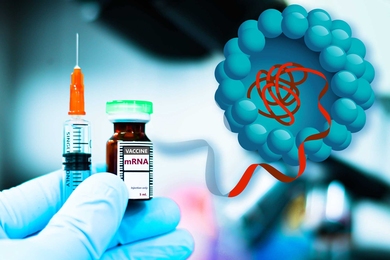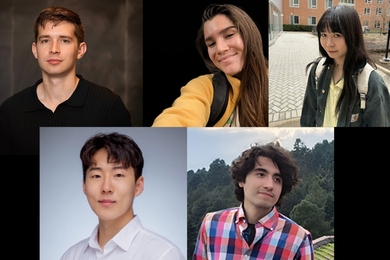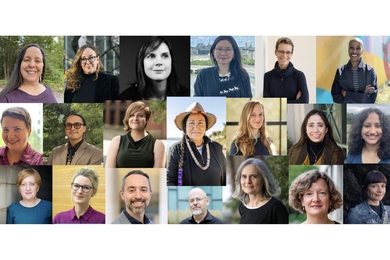The Emma Rogers Society, an organization of widows of MIT alumni and faculty, heard about the challenges and rewards of student volunteerism during last week's Insider Series gathering at the Faculty Club.
Several dozen women listened to first-hand accounts from students who have worked in Cambridge public schools and with MedLINKS and KEYs, a science mentoring program for girls. The event was one of this year's two day-long programs at MIT for members of the six-year-old Society, which also offers peer support and information for new widows, MIT event information, and a luncheon and other gatherings on Technology Day.
Among those who spoke was Priscilla Gray, co-chair of the Public Service Center Steering Committee, who sported a CityDays T-shirt with the "Tomorrow's Leaders Doing Today's Work" slogan. She and PSC Director Emily Sandberg described some of the center's activities such as the Fellows program for MIT students who work in local schools, the spring Science Expo where children display their science projects at MIT, the student-run coat and blanket drive for the homeless, and last spring's Give Racism the Boot event that brought diverse student groups together for community service.
Paul Parravano, assistant for community relations in the President's Office, explained his role in linking the Institute with local groups who can use its help. "We take seriously the responsibility of looking after people in the city either less fortunate or who want to share in the terrific resources available on this campus," he said.
Student volunteers in local schools said their experience was so rewarding that in some cases, they were considering careers in education. Before becoming a PSC Fellow, "volunteerism wasn't a part of my vocabulary," said Gwendolyn Lee, a graduate student in chemical engineering. Her work included designing an after-school science enrichment program and working with immigrant children to help them learn about their new country, school and language.
"It's fulfilling to know you were a role model," said Keith Bevans, a graduate student in electrical science and engineering. On the street or in a shopping mall, students "come up to you-they remember you and what you did for them."
"They're pretty open about telling you they love having you there," added Richard Sanford, a senior in civil engineering. "Things we've been taking for granted, they haven't even learned yet."
Pauline Germeshausen praised the students' efforts and also urged them to consider all age groups when volunteering. "Be sure to do something for people who are older as well as little children," she said. The Lord Foundation donated $100,000 to establish the PSC Fellows program; it has more recently been supported by a grant from the Germeshausen Foudnation.
Society members themselves volunteer for many types of organizations including religious institutions, schools, hospitals, museums, the Red Cross and literacy groups, according to results of a survey sent out to 2,400 women. Director Betsy Millard compiled and distributed respondents' anecdotes and advice about finding challenging volunteer work and making time for it.
Those attending the event were enthusiastic about the presentation and the Society's other offerings. "I was really impressed by the students; the dedication and commitment was exciting to see," said Kitty Weiss. "We hear so much about gaps in [public school] education-it's nice to see these students seeking them out and closing them."
"This organization has really brought us in touch with what's going on at the Institute," said Frances Elliott. "For me, it's been heaven-sent."
The next Insider Series on May 9 will focus on the Sloan School, with talks by Sloan faculty and a tour of the new Tang Center. The Emma Rogers Society is also hoping to expand to include widowers of faculty and alumnae, Ms. Millard said.
A version of this article appeared in MIT Tech Talk on October 18, 1995.





